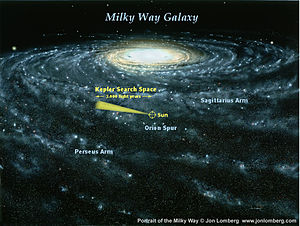Not that long ago, the possibility of finding planets outside our solar system was merely theoretical.
In 1995, astronomers began to be able to detect Jupiter-sized “exoplanets” by their gravitational effect on the stars they orbit. And with the launch of the Kepler satellite in March 2009 and the release last week of the data it has so far gathered, astronomy has crossed a major threshold. The Kepler has discovered 1,235 potential planets.
What makes this so striking is the satellite’s instruments always point at the same tiny arc of the Milky Way near the constellation called the Northern Cross — only one four-hundredth of the sky. The Kepler team leader, William Borucki, at the Ames Research Center in Northern California, says that if Kepler could see the whole sky, it would have found some 400,000 planets.
The satellite detects possible planets by measuring the light of 156,000 stars in its field of view and looking for slight dips in brightness when a planet crosses in front of a star. All of these planets will have to be validated using telescopes. That will take years, given the limited number of astronomers and powerful telescopes on this planet.
Related articles
- Kepler Planet Hunter Finds 1,200 Possibilities (nytimes.com)
- Kepler spacecraft finds more than 1,000 planets (sfgate.com)









